令和5年07月22日 土曜日号
“花すいぎょく 平成28年”

水玉の花が コロン コロン と
大集合。
緑の中で コロ コロ ころがって
かわいい。
(脇阪 克二)
Polka Dot Flower (2016, by Katsuji Wakisaka)
Polka dot-like flowers, ribbit ribbit,
rolling and get together.
The roly-poly flowers
that turning over in the greenery are cute.
| English translation by Karen Yiu |
Fleur émeraude (2016 par Katsuji Wakisaka)
Les gouttes d’eau se rassemblent
en dégringolant le long des fleurs.
Rouler dans cette végétation,
c’est si joli!
| Traduction francaise par JB&B |
花圓點 (2016, 脇阪 克二)
圓圓的花朵 左搖右擺
集合在一起
在一片綠意中 翻滾的模樣
非常可愛
| 中譯 : 莊 幃婷 |
令和3年09月29日 水曜日号
“小舞 平成28年”
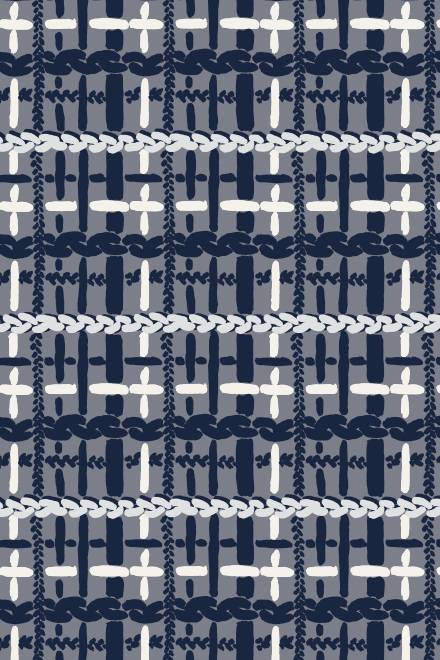
小舞という言葉は聞いたことがないと思う
日本建築の土壁の下地として
竹と縄で格子状に編んだもので
京都の方言だそうです
その上に土壁を塗り
しっくいなどで仕上げます
小舞は下地なので
出来上ると見えなくなるものですが
しっかりと壁を支えます
地味な存在ですが重要なもので
素朴で美しく
いとおしくさえ感じます
(脇阪 克二)
Komai (2016, by Katsuji Wakisaka)
I think you might have never heard the term "komai".
It is used as a base for clay walls in Japanese architecture.
It's made of bamboo and rope woven in a grid pattern.
And the name is from a dialect of Kyoto.
The wall is then finished with plaster.
The komai is the base of the wall,
so you can't see it when the wall is finished.
However, it supports the wall firmly.
It is a plain but important part of the wall,
while being unembellished, beautiful and even adorable.
| English translation by Alison Chuang |
Lattage de bambou (2016, par Katsuji Wakisaka)
Vous n’avez probablement jamais entendu le mot « lattage ».
Il s’agit de damiers de bambou tressés utilisés
Comme base pour les murs en terre des vieilles bâtisses japonaises.
Ce mot serait d’origine de la ville de Kyoto.
Ces damiers sont recouverts de terre, puis plâtrés.
Comme le lattage constitue la base du mur,
Il n’est pas très esthétique mais il le soutient solidement.
Bien que sobre, il est important, tout en étant simple, élégant et précieux.
| Traduction française par JB&B |
小舞 (2016, 脇阪 克二)
日文中有一個單字「小舞」,其涵義鮮爲人知
「小舞」是日本建築用語,也是京都方言
專指土牆下面由竹與繩子編製而成的格狀基底
用小舞打好牆底,接著再敷上土層,最後塗上灰漿
傳統日式土牆便完成了
小舞作爲牆基,雖不為人所見
卻默默支撐著牆體
如此不張揚卻至關重要的存在
讓人感受到一種樸素的美與可愛
| 中譯 : 李 瀟瀟 |
→こちらのテキスタイルデザイン商品
(Textile products with this pattern)
平成30年11月28日 水曜日号
“SO-SU-U 瑞雲(ずいうん) 平成28年”
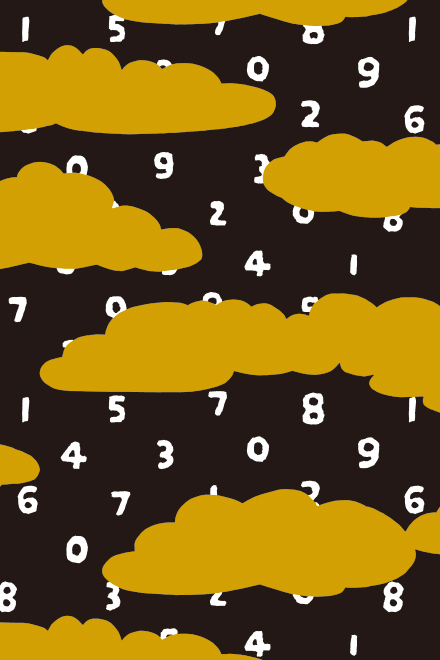
雲がわく
おめでたいことが 起る きざしとして
あらわれる 瑞雲。
雲間に 十数(SO-SU-U)。
何か いいことが起こりそう。
(脇阪 克二)
"Auspicious cloud"(2016,by Katsuji Wakisaka)
Cloud rising in the sky,
People take it as an auspicious sign.
I arranged the pattern SO-SU-U between those auspicious clouds,
Symbolizing a good omen.
| English translation by LI XIAO XIAO |
"SO-SU-U Nuages de bon augure"(2016, par Katsuji Wakisaka)
Les nuages s’élèvent dans le ciel,
Annonciateurs d’heureux auspices.
Le motif SO-SU-U caché dans ces nuages
me donne l’impression que quelque chose
de bien est sur le point d’arriver…
| Traduction française par Jean-Baptiste Fauvel Matsumoto |
"SO-SU-U 瑞雲"(2016, 脇阪 克二)
天上湧起雲氣,
人們將其稱爲「祥雲瑞氣」。
我先畫出祥雲,再將SO-SU-U十數放在雲中,
傳遞一種吉祥的徵兆。
| 中譯 : 李 瀟瀟 |
→こちらのテキスタイルデザイン商品
(Textile products with this pattern)
平成30年05月16日 水曜日号
“花あり 平成28年”
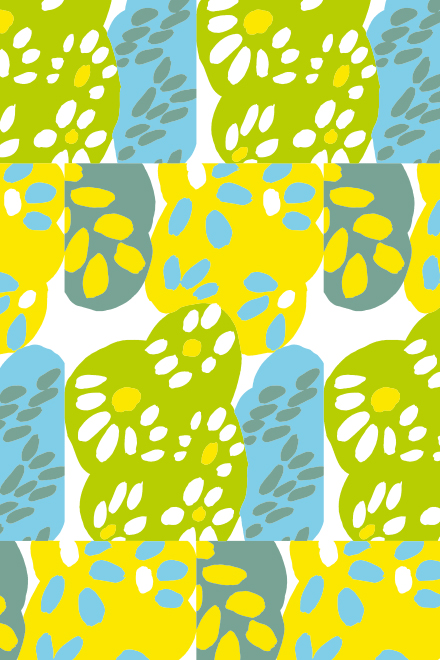
これは何となく ふんいきで描いた
花です。
花ありというのは はんなりの語源。
上品で明るく はなやかな様を
表わす言葉です。
(脇阪 克二)
"Hana-ari"(2016,by Katsuji Wakisaka)
I drew some flowers casually and named it "hana-ari"
Hana-ari is the root of "han-nari" Kyoto dialect.
This word is to describe someone elegant and radiant.
| English translation by LI XIAO XIAO |
"Hanaari"(2016, par Katsuji Wakisaka)
Voici une fleur que j’ai dessiné,
de façon approximative.
Le mot Hanaari est la racine du mot Hannari.
Dans le dialecte de Kyoto, ce mot signifie
élégant, magnifique et radieux.
| Traduction française par Jean-Baptiste Fauvel |
"有花"(2016, 脇阪 克二)
我光憑大致感覺描繪出這些花
圖案名「hana-ari」是日語「はんなり」(han-nari)的詞源
形容氣質優雅又不失可愛
| 中譯 : 李 瀟瀟 |
→こちらのテキスタイルデザイン商品
(Textile products with this pattern)
平成30年02月28日 水曜日号
“SO-SU-Uとすいぎょく 平成28年”
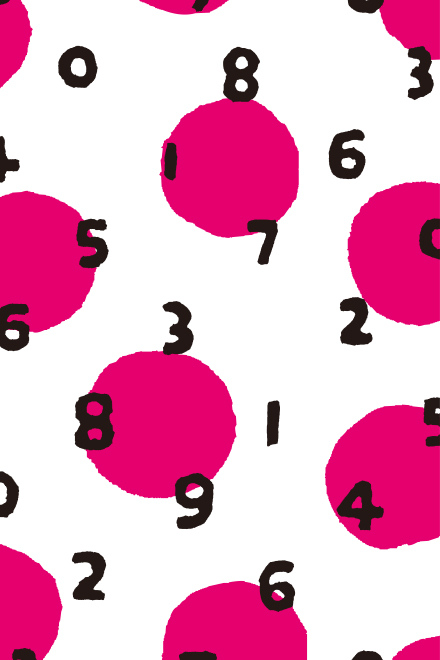
SO-SU-Uとすいぎょく。
人気の2つの模様の組み合わせ。
SO-SU-Uの個性とすいぎょくのかわいさが重なりあって
又、別の面白さが生まれ出る。
(脇阪 克二)
"SO-SU-U and emerald"(2016,by Katsuji Wakisaka)
I combine two popular pattern of SOU・SOU,
With distinctive style of SO-SU-U and cute Suigyoku,
It brings NEW fun.
| English translation by LI XIAO XIAO |
"SO-SU-U et Jadéite"(2016, par Katsuji Wakisaka)
SO-SU-U et Jadéite.
Le mélange de deux designs populaires.
L’unicité de SO-SU-U et la beauté de la jadéite réunis
Laissant place à une nouvelle distraction.
| Traduction française par Jean-Baptiste Fauvel Matsumoto |
"SO-SU-U和水玉"(2016, 胁阪 克二)
我嘗試把SO-SU-U和水玉這兩個SOU・SOU的人氣織紋相結合,
創作出這個新的紋樣。
數字的個性和水玉的可愛融合,
煥發出別樣的趣味。
| 中译 : 李 瀟瀟 |
→こちらのテキスタイルデザイン商品
(Textile products with this pattern)
平成29年10月07日 土曜日号
“よろこび 平成28年”
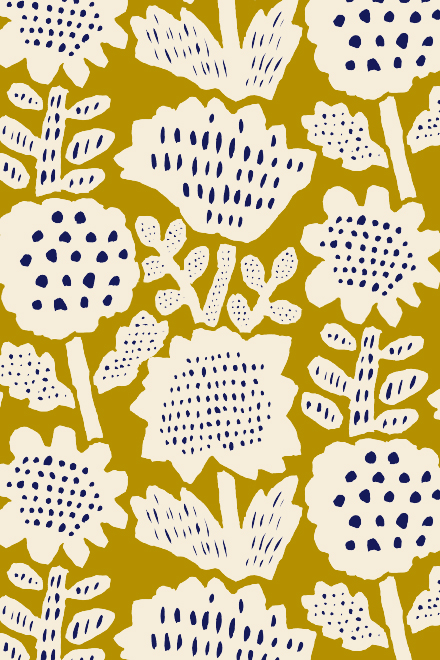
太陽の光り、新鮮な空気、
いっぱいの緑、色とりどりの花。
今を生きている よろこび。
(脇阪 克二)
"Joy"(2016,by Katsuji Wakisaka)
Bright sunshine, fresh air,
Green field with vivid flowers in mass of colors.
Live for today, joy of the real moments.
| English translation by LI XIAO XIAO |
"La joie"(2016, par Katsuji Wakisaka)
La lumière du soleil, l’air frais,
une verdure dense, des fleurs multicolores.
La joie de vivre l’instant présent.
| Traduction française par Jean-Baptiste Fauvel Matsumoto |
"喜悅"(2016, 脇阪 克二)
太陽的光熱,空氣的澄澈
綠意的生機,花的繽紛
一切都是活在當下的生命的喜悅
| 中譯 : 李 瀟瀟 |
→こちらのテキスタイルデザイン商品
(Textile products with this pattern)
平成29年09月06日 水曜日号
“いろはごっこ 平成28年”
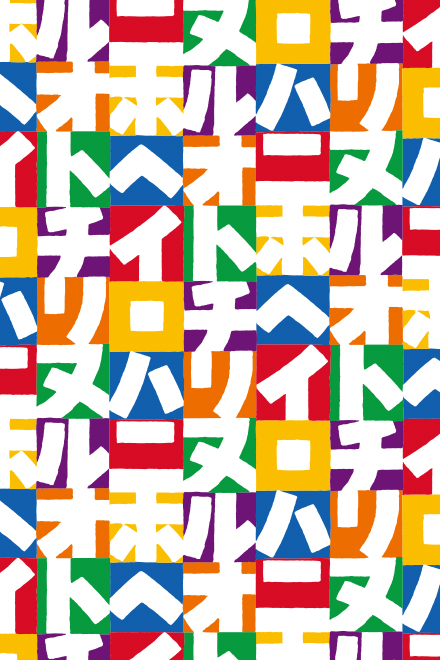
子供のいる家へ行くと
いろんなおもちゃがある。
箱の中に色とりどりのカタカナの
文字が入っている。
なつかしいなぁ!
子供時代がよみがえってくる
(脇阪 克二)
"Japanese character blocks"(2016,by Katsuji Wakisaka)
When I visit families with children,
Those interesting toys are attractive to me.
Colorful blocks of Japanese character (Katakana) in the box,
Bringing back my fun memories of childhood.
| English translation by LI XIAO XIAO |
"Iroha gokko / ABC"(2016, par Katsuji Wakisaka)
Il y a pléthore de jouets dans les maisons
où résident un enfant.
Il y a dans une boite des lettres coloroées
représentant l'alphabet japonais, les katakana.
Que de nostalgie!
Me revoilà dans ma plus tendre enfance.
| Traduction française par Jean-Baptiste Fauvel Matsumoto |
"假名游戲"(2016, 脇阪 克二)
去拜訪有小孩的朋友家
總會看到各種玩具
其中就有這種假名拼圖玩具
五彩繽紛的假名
整齊地裝在盒子裡
讓人懷念童年時光
| 中譯 : 李 瀟瀟 |
→こちらのテキスタイルデザイン商品
(Textile products with this pattern)
平成29年03月25日 土曜日号
“カタカナ 平成28年”

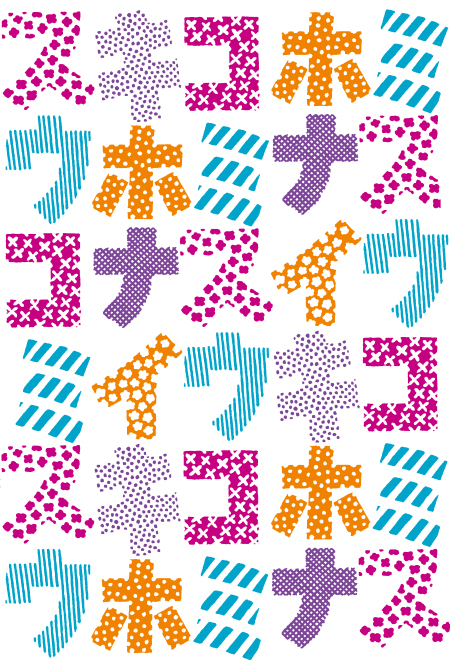
日本人は 漢字から ひらがな、
カタカナを創り出してきた。
ひらがなは それ自体で
美的に使われる様になった。
一方 カタカナは漢字を補足する
ことなど 記号的性格が強い。
しかし アルファベットの様に
直線と曲線で構成され
ポップでかわいい感じがする。
(脇阪 克二)
"Katakana"(2016,by Katsuji Wakisaka)
Japanese produced hinagara and katakana based on the Kanji.
While hinagara has a beautiful calligraphy style,
Katakana has a strong symbolic character.
However, resembling to the English alphabet,
Katakana consists of straight lines and curves,
Showing its pop and delightfully cute appearance
| English translation by LI XIAO XIAO |
"Katakana"(2016, par Katsuji Wakisaka)
Les japonais ont élaboré les katakana
À partir des hiragana, dérivés des kanji.
Les hiragana sont aujourd’hui utilisés
Comme tel, de manière esthétique.
D’un autre côté, les katakana, qui
Complémentaire aux nombreux kanji
Ont un caractère symbolique fort.
Cependant, à l’image des lettres de l’alphabet,
Ils sont faits de lignes droites et courbes,
Leur conférant un esprit pop très mignon.
| Traduction française par Jean-Baptiste Fauvel Matsumoto |
"片假名"(2016, 胁阪 克二)
日本人從漢字演化創造了平假名和片假名。
平假名來源于草書,流暢而美,
相比之下片假名更側重記號性。
片假名和英文字母ABCD一樣,
由直線和曲線組合而成,
雖然有棱有角,但也活潑可愛。
| 中译 : 李 瀟瀟 |
→こちらのテキスタイルデザイン商品
(Textile products with this pattern)
平成29年02月25日 土曜日号
“律 平成28年”

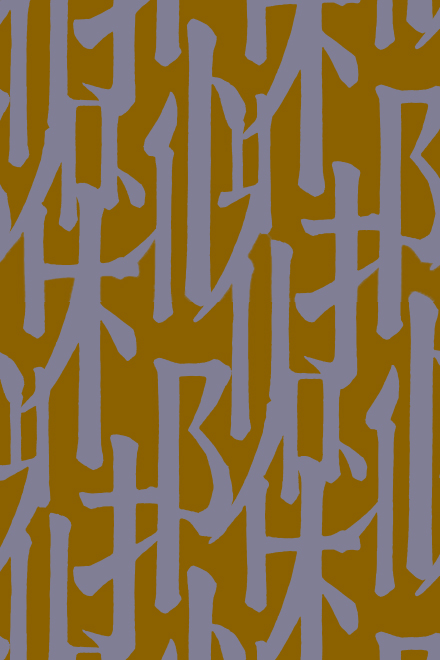
漢字は偏(へん)、旁(つくり)、冠(かんむり)など
いくつかの部分で構成されている。
偏だけを使って 縞模様のような
柄をつくる。
漢字独特の強弱やリズムが
ある心地良さと 施律をかなでてくる。
規律の中の美しさとも言える。
人も自分自身を律して生きると
美しい。
(脇阪 克二)
"Ritsu / Rhythm"(2016,by Katsuji Wakisaka)
Kanji, or Chinese character, are made of hundreds of radicals.
I picked a radical to made this stripe-looking textile design.
Kanji has their unique rhythm, which makes me feel pleasant.
That’s the same as individual.
People who follow their own rhythm are outstandingly beautiful.
| English translation by LI XIAO XIAO |
"Ritsu / Rythme "(2016, par Katsuji Wakisaka)
Les Kanji, caractère d’origine chinoise, sont construits à partir de nombreuses clés. J'ai utilisé la clé hen 偏 afin de créer ce motif en forme de bandes. Il existe un rythme unique à chaque caractère, Une mélodie apaisante et réconfortante. Une sorte de beauté dans la discipline, pourrait-on dire. Les personnes qui suivent leur propre rythme sont également ravissantes.
| Traduction française par Jean-Baptiste Fauvel Matsumoto |
"律"(2016, 胁阪 克二)
漢字由偏旁,部首,字頭等部分構成,
我只取「偏旁」這個元素,
將其設計成條文花樣的3月織紋。
漢字有它獨特的強弱和律動,
規律中含有一種舒暢人心的韻律美。
人也是如此,
擁有自身獨特節奏律動的人很美。
| 中译 : 李 瀟瀟 |
→こちらのテキスタイルデザイン商品
(Textile products with this pattern)
平成29年01月25日 水曜日号
“はじまり 平成28年”

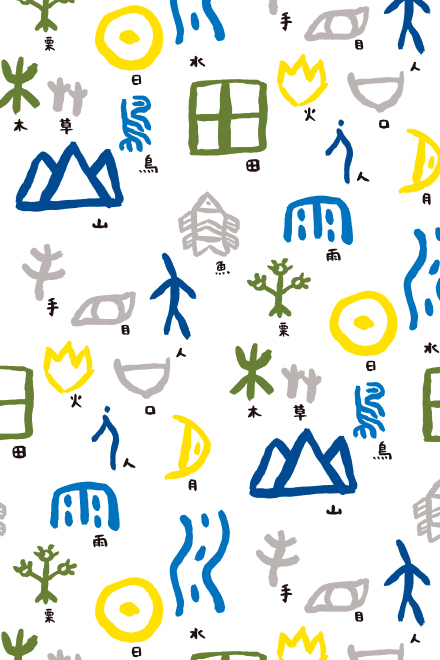
物事には はじまりがある
漢字は 物の形をまねて書くことから
はじまり 少しずつ進化して
現在の形になってきた
人も生まれて 人生がはじまり
成長していく
はじまりのころは
漢字も人も かわいいですね
(脇阪 克二)
"Beginning"(2016,by Katsuji Wakisaka)
Everything has a beginning.
Kanji (Chinese characters) is no exception.
The earliest kanji were just pictographs that kind of looked like something.
Then it developed, step by step, becoming what they are today.
So does man.
We were born to live, growing to complete individuals.
Things are fascinating at the very beginning,
Both for kanji and man.
| English translation by LI XIAO XIAO |
"Commencement"(2016, par Katsuji Wakisaka)
À chaque chose, son commencement.
L'écriture japonais a été créée
en représentant la forme des objets.
Au départ, elle a évolué petit à petit
Pour arriver à sa forme actuelle.
Les hommes naissent également,
Marquant le début de la vie,
Et grandissent d'année en année.
Cette étape de commencement est charmante,
Tant pour l'écriture que pour les hommes.
| Traduction française par Jean-Baptiste Fauvel Matsumoto |
"始"(2016, 胁阪 克二)
萬物皆有始。
漢字是從最初的象形符號,
一步步進化而來。
人也是如此。
出世,成長,體驗人生。
萬事萬物的初始,
總是充滿著吸引力。
| 中译 : 李 瀟瀟 |
→こちらのテキスタイルデザイン商品
(Textile products with this pattern)
平成29年01月04日 水曜日号
“酉 平成28年”
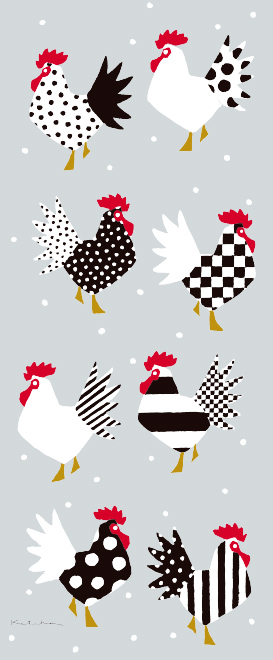
シンプルな形のにわとりに
黒で模様を入れる。
赤でアクセントをいれ、
おめでたさを表現。
皆様にとりまして
酉年が良いお年でありますように!!
(脇阪 克二)
"Year of the Rooster"(2016,by Katsuji Wakisaka)
In the simple outline of roosters,
Let's add some black patterns, and
Adorned it with some auspicious red!
Best wishes for an excellent year of the Rooster !!
| English translation by LI XIAO XIAO |
"Le coq"(2016, par Katsuji Wakisaka)
Dans un coq d'une forme simple,
Ajoutons des motifs en noir.
Un petit accent rouge Pour exprimer la festivité.
Nous vous souhaitons à tous une excellente année du Coq!!
| Traduction française par Jean-Baptiste Fauvel Matsumoto |
"酉雞"(2016, 胁阪 克二)
在酉雞的簡潔輪廓中,
用黑色填補出各種紋樣,
再點綴上寓意吉祥的紅色。
祝願您幸福繞雞年!
| 中译 : 李 瀟瀟 |
→こちらのテキスタイルデザイン商品
(Textile products with this pattern)
平成28年12月25日 日曜日号
“乱 平成28年”

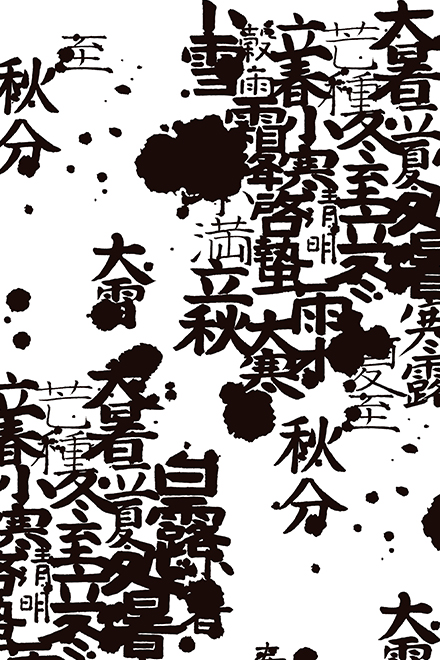
たっぷり墨をふくんだ筆を
真白い紙の上に持っていった
ところでボタッと墨が落ちる。
しまったと思ったがもうおそい。
続けてポタポタッと……。
心が乱れるが24節気を書く。
これも習作の一枚として
残しておこう。
(脇阪 克二)
"Disorder"(2016,by Katsuji Wakisaka)
While I carry my painting brush full of ink above the white paper,
A drop dripped heavily.
Ah no! But it’s too late,
And other drops follow.
It disordered my mind but I still wrote the 24 solar terms.
I will keep this painting as a special work.
| English translation by LI XIAO XIAO |
"Désordre"(2016, par Katsuji Wakisaka)
Alors que je porte mon pinceau plein d'encre Au dessus de ma feuille toute blanche, Une goutte tombe lourdement. Ah non!... Trop tard. Et d'autres gouttes suivent… Mon cœur est bouleversé mais J'écris tout de même les 24 cycles solaires. Je garderai également cet travail Comme feuille d'exercice.
| Traduction française par Jean-Baptiste Fauvel Matsumoto |
"亂"(2016, 胁阪 克二)
我將畫筆蘸滿墨,移到白紙之上。
啪嗒。
一滴墨落在紙上。
想補救但爲時已晚。
啪嗒、啪嗒啪嗒……
墨汁接連滴下。
我心神不定地書下24節氣,
並決定把它作爲一張特別的習作留下。
| 中译 : 李 瀟瀟 |
→こちらのテキスタイルデザイン商品
(Textile products with this pattern)
平成28年11月25日 金曜日号
“洛中洛外図 平成28年”

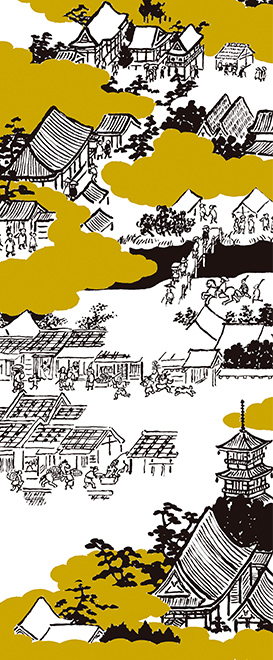
京都の市街(洛中)と郊外(洛外)
の景観や風俗が描かれた屏風。
寺社仏閣や祭、庶民の暮らしまで
細かく描き込まれている。
全体に雲を配して構成され
いろんな場面を華麗に表現している。
今も京都にある風景と重なっていて
想像力をかきたて 見あきることがない。
(脇阪 克二)
"Rakuchū-Rakugaizu / Sights in and around Kyoto"(2016,by Katsuji Wakisaka)
Folding screens of Rakuchu rakugai-zu, or Sights in and around Kyoto,
Depicted the town area (inner Kyoto) and suburbs (outer Kyoto).
Views of shrines and temples, scenes of festivals and lives of common people are all painted in details.
With the arrangement of clouds in composition,
It creates a magnificent illustration of many vivid sights.
This textile held forth the charms of Kyoto, association between ancient and modern.
You'll never get tired of it...
| English translation by LI XIAO XIAO |
"Rakuchū-Rakugaizu / Plan intérieur-extérieur de Kyoto"(2016, par Katsuji Wakisaka)
Il s'agit d'un paravent où sont dessinés
les paysages et les coutumes du centre et de la banlieue de Kyoto.
Y sont également dessinés avec précision
les temples et sanctuaires de la ville, les festivals ou les petites gens.
Structuré dans son entier avec l'ajout de nuages,
Il représente avec magnificence une multitude de scènes.
Juxtaposées avec des scènes d'un Kyoto beaucoup plus contemporain,
elles stimulent notre imagination.
Impossible de s'en lasser...
| Traduction française par Jean-Baptiste Fauvel Matsumoto |
"洛中洛外圖"(2016, 胁阪 克二)
描繪京都的市區街道、郊外的景色以及風俗的屏風。
京都的神社寺廟,四季節慶,庶民生活等一覽無遺地呈現其中。
在霭霭金雲掩映下,華麗生動地彩描了古都熱絡繁榮的景象。
同時激發觀者的想像力,將圖中所繪的場景與當代京都今昔重疊,不爲疲也。
| 中译 : 李 瀟瀟 |
→こちらのテキスタイルデザイン商品
(Textile products with this pattern)
平成28年09月03日 土曜日号
“石庭 平成28年”

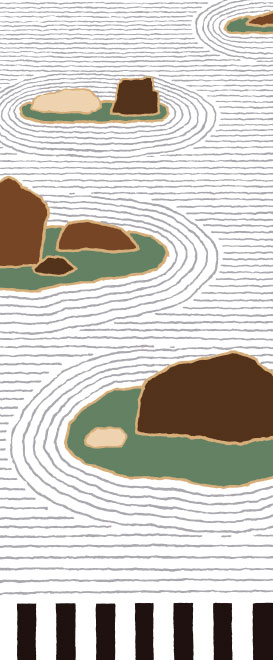
石と砂と苔で構成された庭。
禅宗のお寺にある石庭は
木や水を廃した非日常的な空間。
哲学的な問いが浮び上ってくる。
この緊張感が快よい。
(脇阪 克二)
"Sekitei / Rock garden"(2016,by Katsuji Wakisaka)
The rock garden of Zen Buddhist temples,
Creates a non-ordinary landscape through carefully composed arrangements of rocks, sand and moss,
With out any trees or water feature,
Rock garden evokes some philosophical concepts.
This voltage is a pleasant feeling.
| English translation by LI XIAO XIAO |
"Sekitei / Jardin sec"(2016, par Katsuji Wakisaka)
Un jardin modelé avec des pierres, du sable et de la mousse.
Les jardins secs des temples bouddhistes zen
Sont des espaces insolites sans arbres ni eau.
Des questions philosophiques émergent dans nos esprits.
Ce sentiment de tension est plaisant.
| Traduction française par Jean-Baptiste Fauvel Matsumoto |
"石庭"(2016, 胁阪 克二)
沙礫,岩石,苔藓,
構成了日本禅宗的石庭。
枯山水營造出一隅非日常的空間,
表達出深沈的哲理,
也喚起某種暢快的緊張感。
| 中译 : 李 瀟瀟 |
→こちらのテキスタイルデザイン商品
(Textile products with this pattern)
平成28年07月26日 火曜日号
“扇子 平成28年”

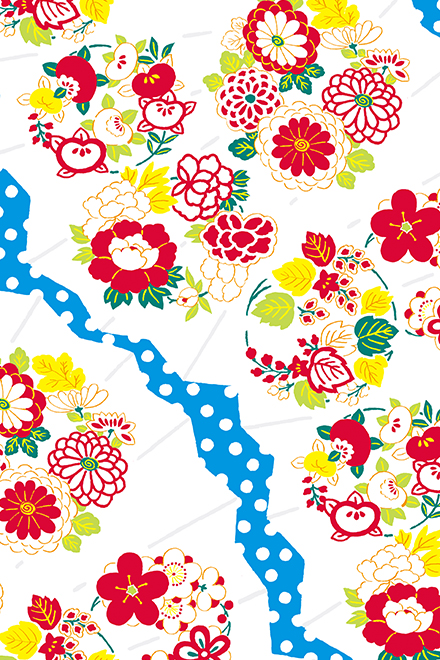
うちわは文明発祥時からあったが
扇子のように折りたためるものは
日本で発明されたもののようだ。
平安時代にはあおぐという役割だけではなく
儀礼の際やコミュニケーションの
道具として用いられ
和歌を扇子に書いて贈ったり
花をのせて手渡したりしていた。
現在においても涼をとる以外に
舞扇としてや落語、お茶、
冠婚葬祭にも用いられている。
又、飾り扇として華やかな絵と
ともに暮しに潤いを与えている。
(脇阪 克二)
"Sensu / Folding fan"(2016,by Katsuji Wakisaka)
Sensu, or folding fan, unlike uchiwa(round fan) which originally came from China,
were first invented in Japan.
During the Heian period, it was not only served to a cooling device, but also as a tool for social contact or traditional ceremonies.People writing waka poems on sensu or put flowers on them and giving them to someone in mind.
Currently, apart from its cooling off function, sensu can also be seen during rakugo performances(traditional comic storytelling), tea ceremonies, funerals, weddings, and other ceremonial occasions.
There are also sensu with traditional gorgeous patterns that make them as interior accesseories.
Sensu gives poetic charm to hot summer in Japan.
| English translation by LI XIAO XIAO |
"Sensu / Éventail"(2016, par Katsuji Wakisaka)
L'écran à main existe depuis l'apparition de l'écriture mais il semblerait que le premier éventail plié ait été découvert au Japon.
Pendant l'ère Heian, il ne servait pas simplement à éventer mais également comme outil de communication ou à l'occasion de réunions protocolaires et religieuses. Il était aussi offert avec un poème Waka écrit dessus ou accompagné d'une fleur.
Présentement, à part sa fonction de ventilation, il est utilisé comme éventail de danseur lors de représentations de rakugo, de cérémonies de thé ou d'événements importants de la vie quotidienne. Pour finir, il donne une touche décorative à la maison grâce à ses magnifiques représentations.
| Traduction française par Jean-Baptiste Fauvel Matsumoto |
"折扇"(2016, 胁阪 克二)
團扇古而有之,折扇則發祥于日本。
平安時代,折扇不僅是扇風取涼的道具,
也是社交禮儀中廣爲使用的物品。
人們在扇面上揮毫和歌,或是把鮮花放在折扇上相互贈送。
如今折扇常用于在茶道或冠婚葬祭的儀式中,
也作爲舞扇或是落語(日本單口相聲形式的曲藝演出)的舞台小道具。
折扇的藝術價值高,成爲現代工藝品被展覽收藏。
華麗的扇面紋樣是日本人生活中的一抹亮彩。
| 中译 : 李 瀟瀟 |
→こちらのテキスタイルデザイン商品
(Textile products with this pattern)
平成28年06月25日 土曜日号
“半纏(はんてん) 平成28年”

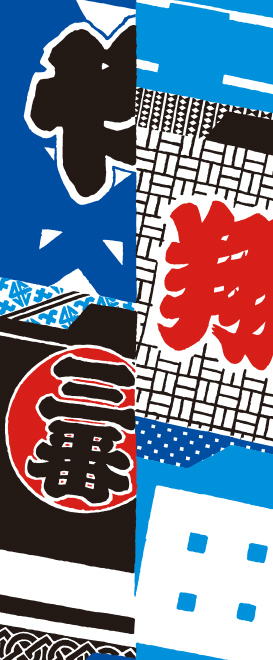
江戸時代、庶民の間で着用されるようになり
主に職人やお店の作業着として
広く愛用されてきた。
現在は祭半纒を着た威勢のいい姿が
祭を盛り上げる。
江戸火消しや消防団員の半纒姿も
見ることが出来る。
半纒は誰が着ても形になり
それ一枚着るだけで目立ち、
その世界の人になれる優れものだ。
(脇阪 克二)
"Hanten"(2016,by Katsuji Wakisaka)
Hanten, or traditional Japanese short jacket, became popular during the Edo period.
It is widely worn by the common people as craftsmen's working clothes.
Hanten is also the uniform for firefighters of Edo.
Nowadays, people wear Hanten at traditional Japanese festivals to spice up the atmosphere.
No matter who you are, putting on a Hanten will make you stand out and become drop‐dead gorgeous.
| English translation by LI XIAO XIAO |
"Hanten, / veste traditionnelle"((2016, par Katsuji Wakisaka)
Pendant la période d’Edo, le Hanten, sorte de veste traditionnelle utilisée comme uniforme,
en vint à être porté par le peuple japonais, principalement par les artisans en tant qu'habit de travail.
Aujourd'hui, les japonais plein d'entrain en portent lors des festivals traditionnels.
Il peut aussi être aperçu sur les épaules des pompiers depuis l'époque d’Edo.
Peu importe qui le porte, le Hanten attire les regards et représente un excellent vêtement
qui montre l'appartenance à un groupe particulier.
| Traduction française par Jean-Baptiste Fauvel Matsumoto |
"半缠"(2016, 胁阪 克二)
半缠是一种和服短外褂,
多为江户时代的手艺人所穿用。
日本的传统节庆活动中,
身着祭典半缠的年青人魄力十足,
是热闹庆典中的一笔浓墨重彩。
半缠还是江户时代的消防警备员的制服。
不论是谁,披上半缠,都会显得潇洒逸群,引人注目。
| 中译 : 李 瀟瀟 |
→こちらのテキスタイルデザイン商品
(Textile products with this pattern)
平成28年05月25日 水曜日号
“浮世絵 平成28年”

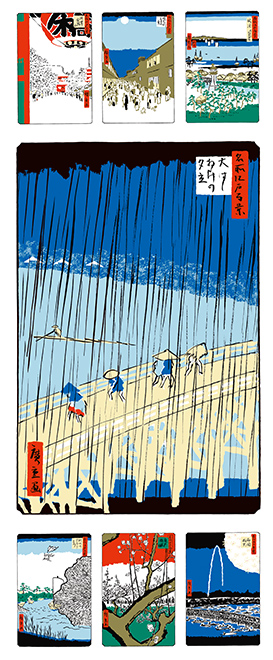
江戸時代に人々に愛された浮世絵。
木版画として量産され
一般大衆が安く購入できた。
美術品としてではなく
大衆が求めているものを表現しており
人々は手にとって眺め楽しんだ。
現代のマンガとの共通点が多く
僕はこの世界にこそ
日本文化の真髄があると思っている。
これは広重の江戸名所百景を
中心に構成した。
(脇阪克二)
"Ukiyo-e"(2016,by Katsuji Wakisaka)
Ukiyo-e, literally ‘paintings of the floating world’,
were widely loved since the Edo period.
Most of ukiyo-e were woodblock prints and were affordable to ordinary people as they could be mass-produced.
Thus, they developed into popular art.
In a sense, ukiyo-e are similar to modern comics.
This, in essence, is the soul of Japanese culture.
Incidentally,「One Hundred Famous Views of Edo」by Hiroshige,
is the representative achievement of ukiyo-e.
| English translation by LI XIAO XIAO |
"Ukiyo-e"(2016, par Katsuji Wakisaka)
Les ukiyo-e sont des estampes populaire grandement appréciées pendant l'ère d’Edo. Produites en grande quantité comme gravure sur bois, le peuple pouvait en acheter à bas prix. Non pas considérées comme des œuvres d'art, Elles représentaient des histories populaires, Que les japonais achetaient pour se divertir. Partageant de nombreux points communs avec nos mangas actuels, j'ai l'intime conviction qu'elles représentent en partie l'essence de la culture japonaise. Mon design est inspiré des œuvres de l'artiste Hiroshige, “les cent vues d’Edo”.
| Traduction française par Jean-Baptiste Fauvel Matsumoto |
"浮世绘"(2016, 胁阪 克二)
浮世绘是江户时期兴起的一种广受世人喜爱的民族艺术。
它以木版画的形式,作品大量印制,
从而成为普通老百姓也买得起的雅俗共赏的绘作。
浮世绘类似现代漫画,为迎合大众需求,主要描绘人们日常生活,
其中歌川广重的《名所江户百景》最具代表性。
在我看来,浮世绘中蕴含着日本文化的真髓。
| 中译 : 李 瀟瀟 |
→こちらのテキスタイルデザイン商品
(Textile products with this pattern)
平成28年04月26日 火曜日号
“武者絵 平成28年”

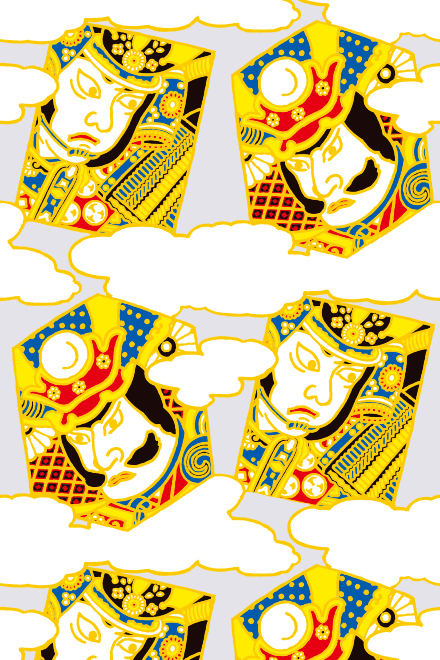
歴史、伝説、軍記物などに
登場する英雄、豪傑、武将や
その合戦の場面を描いたもの。
地方によっては5月の端午の節句に
武者絵のぼりを自宅の庭に立てる。
男児の誕生を祝い
無病息災、立身出世を願う。
(脇阪克二)
"Musha-e / Japanese warrior prints"(2016,by Katsuji Wakisaka)
Musha-e, or warrior prints, depicted armored samurai in battle scenes and other historical or legendary settings.
In some places, there is a custom of setting out Mushae-nobori (labrums with a warrior prints) in the garden, as the decoration of Tango-no-sekku on May 5 with the wish for the boy’s birth, sound growth and success in life.
| English translation by LI XIAO XIAO |
"Musha-e / Busshae Image de guerrier"(2016, par Katsuji Wakisaka)
Nous avons dessinés une scène de bataille dépeignant un héro, un grand homme et un général qui apparaîssent dans l’Histoire, les légendes et les chroniques de guerre.
Selon les régions, le Jour des Garçons, on installe dans le jardin un étendard de guerrier, pour fêter la naissance d'un garçon et lui souhaiter une bonne santé et une réussite sociale dans sa vie future.
| Traduction française par Jean-Baptiste Fauvel Matsumoto |
"武者绘"(2016, 胁阪 克二)
武者,即武士;
武士绘,指描绘历史、传说战争小说中武士着甲胄的姿态,或交战情景的浮世绘。
在日本一些地区,人们在端午节那天挂出印有武士绘的旗子,
用来庆祝家中男孩子的诞生,或祈愿他们的无病消灾,出人头地。
| 中译 : 李 瀟瀟 |
→こちらのテキスタイルデザイン商品
(Textile products with this pattern)
平成28年03月29日 火曜日号
“大漁旗 平成28年”

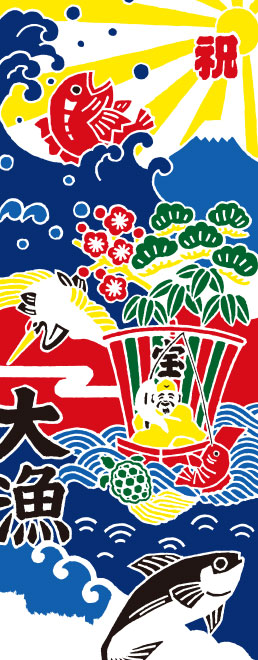
漁船が大漁で帰港する際に
掲げる旗。
海上からでも目立つように
派手な色彩や大胆な構図で
描かれている。
「大漁」や「祝」の文字、
日の出や魚、恵比寿様や宝船
などの絵柄が多い。
人々の大漁への願いが生んだ
極彩色で力強い意匠だ。
(脇阪克二)
"Tairyō-bata / Fisherman’s flag"(2016,by Katsuji Wakisaka)
Tairyō-bata, literally translated as “big catch flag”, originally flown by boats that return to port with big catches.
They typically involving bright colors, so that it can be seen at sea.
The words "Big Fish " and "Celebration" in Chinese characters are written on them.
They also represent the pattern of sunrise, fish, Ebisu (God of development) and takarabune (treasure ship).
Tairyō-bata is a richly-colored and energetic design,
born of the strong hope that fishermen will be blessed with abundant catches.
| English translation by LI XIAO XIAO |
"Tairyō-bata / Drapeau de pêcheurs"(2016, par Katsuji Wakisaka)
Quand ils rentrent au port avec des grosses prises, les bateaux de pêches hissent un drapeau. Afin qu'il puisse être vu en pleine mer, Les dessins sont énormes et très colorés. Ils représentent souvent le levé du soleil, Des poissons, des bateaux-trésors ou encore La divinité de la pêche et du commerce Ebisu. Les mots “Gros Poissons” ou “Célébration” y sont parfois écrits dessus. Il s'agit d'une conception colorée et énergique, Née du désir de bonnes pêches des locaux.
| Traduction française par Jean-Baptiste Fauvel Matsumoto |
"大渔旗"(2016, 胁阪 克二)
大渔旗是渔船丰收归港时扬起的彩旗。
为了在茫茫大海中显得耀眼醒目,
大渔旗着色鲜艳,构图大胆。
旗面通常绘有“大渔”“祝”等字样,
以及旭日、鱼、惠比寿神、宝船等图案。
大渔旗满载着人们祈祷渔业丰收的愿景,
是具有强烈的色彩感和力量感的日本传统设计纹样。
| 中译 : 李 瀟瀟 |
→こちらのテキスタイルデザイン商品
(Textile products with this pattern)



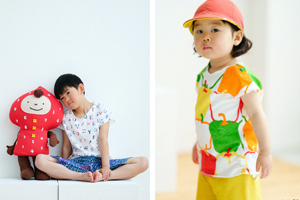

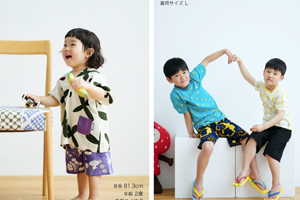
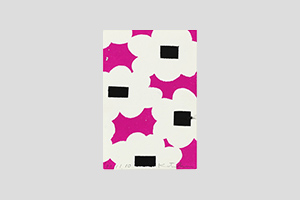
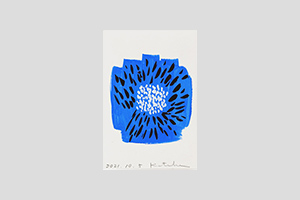
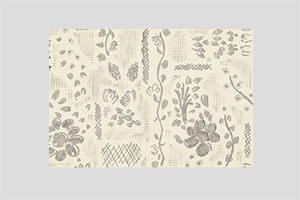
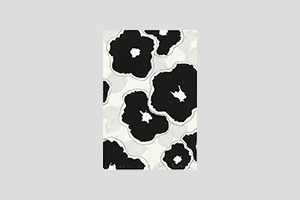
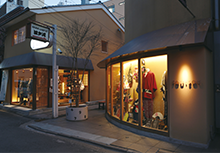
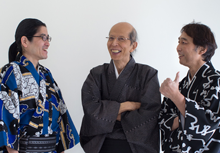

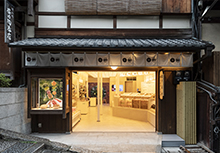

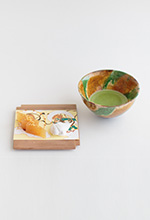
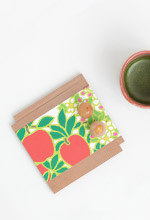










 お問い合わせ窓口
お問い合わせ窓口










